Do you find yourself in a situation without access to a washing machine during your travels away from home, or maybe you’re planning on moving out and want to know how to do laundry without one? Don’t worry – you’re not alone!
We’ve compiled this helpful guide on different ways to wash clothes without a washer so you can keep your wardrobe spick and span. Read on for some tips, tricks, and suggestions that will make the process much easier.
Table of Contents
Can All Clothes Be Washed Without a Washer?
Yes, all clothes can be washed without a washer! It all depends on the fabric and the particular item, though – some pieces of clothing may require special care when hand washing.
Most of us take for granted the convenience of a modern washing machine, but just because technology has advanced over the years doesn’t mean it’s impossible to wash clothes without one. With all of the washing machines available today, it’s easy to forget that clothes were once washed without them.
For many centuries before washers were invented, people still managed to keep their clothes clean. It just took longer and required more physical work on the part of the washer. But with some creativity and important guidelines in mind, it’s an easy job!
How to Hand Wash Clothes The Right Way
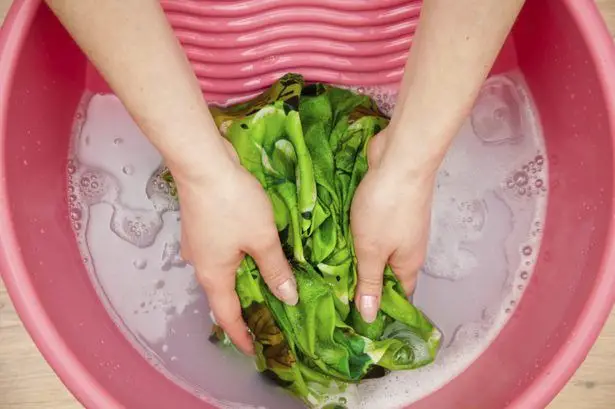
Washing clothes by hand is an age-old tradition that has managed to stay relevant even today, and there are some benefits to it. When washing clothes by hand, you get more control over how much detergent is used, which level of scrubbing to give certain items, and the temperature of the water.
Step 1: Separate Your Clothes
Starting with the basics, washing clothes by hand requires a bit of prep work! For starters, keep your whites and colors separate to prevent any unwanted unintentional tie-dying.

Now, don’t be intimidated – there’s no need to go full fashionista and create intricate outfits here either, it’s enough just to distinguish between light and dark items.
Don’t forget about any delicate items – wool, cashmere, silk, lace – as these deserve a more gentle wash anyways and should be done separately.
Step 2: Lay the Clothes in a Washing Tub
Before you start scrubbing your clothes against the ridges, lay them out in a washing tub or bucket large enough to hold all your clothes.
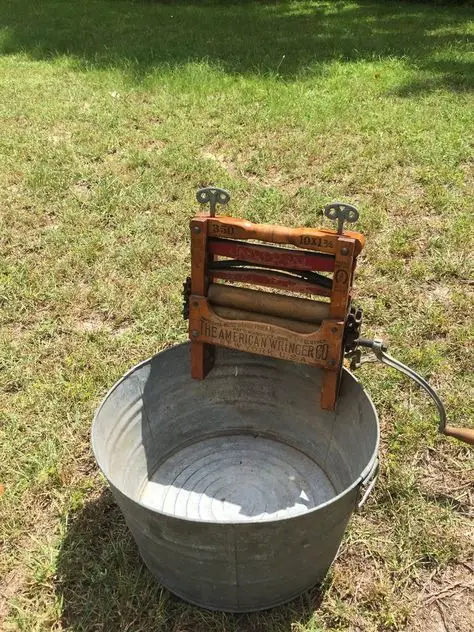
You can still get the job done, even if you don’t have a traditional washing tub. Improvise with whatever container is available – an old bucket or plastic basin will do! Just be sure it’s big enough to give your clothes enough room to move around and get cleaned.
Step 3: Pre-Treat Any Stains
Pre-treating any unsightly spots before cleaning can make all the difference; using a stain remover or even a household product like baking soda is an easy and effective solution. All you need to do is dab some of the product directly onto the spot and wait for a few minutes.
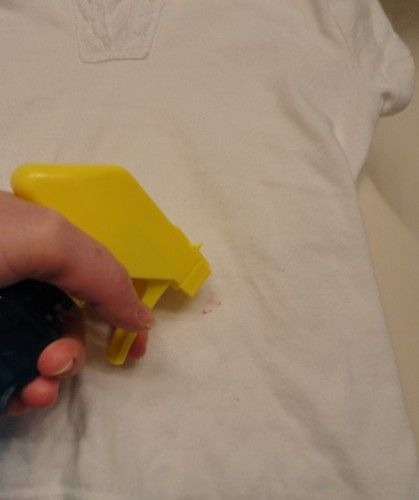
Doing this can save you loads of time, as well as money, in the end. Furthermore, it helps reduce the appearance of any blemishes that may surface as a result of improper laundering.
Step 4: Fill the Washing Tub With Water
Hot water may be tempting as it will get your whites brighter and help remove tough stains, but unless the garments you are washing are sufficiently sturdy and heavily soiled, it is best practice to use cool or lukewarm water.
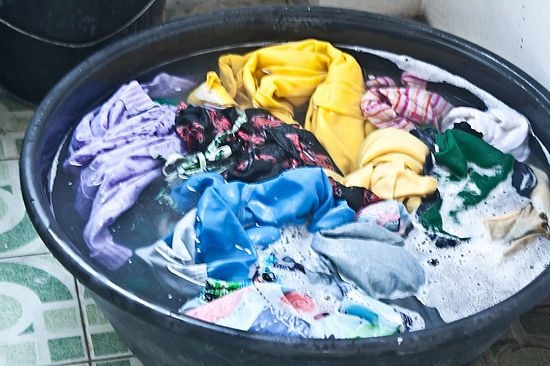
If you’re not sure whether an item of clothing can handle warm water, why take the risk – play it safe and opt for cool water instead!
Step 5: Add Laundry Detergent
You don’t need to use a lot of detergent. In fact, just one or two teaspoons (5-10 mL) is all that’s necessary for a single load. If you plan on tackling several items at once, feel free to add a bit more detergent to ensure your clothes come out sparkling clean.
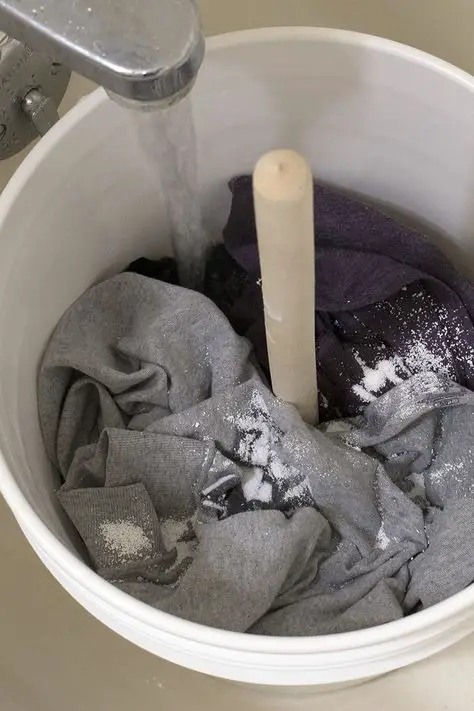
Mix the laundry detergent well with the cleaning water before doing anything else!
Step 6: Let the Clothes Soak
A key part of the process lies in soaking the fabrics in water and detergent for an appropriate length of time – around 20 to 30 minutes should do it in most cases. If they’re especially muddy, leave them to soak for up to an hour.
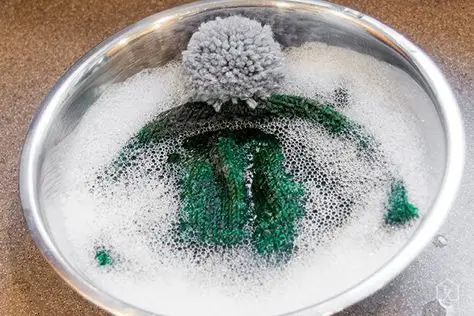
Step 7: Swish
After soaking the clothes in water and detergent, gently swish them around to ensure that all of the dirt and grime from your daily activities gets washed out properly. Make sure not to be too vigorous, however, as fabric can get stretched or torn if you’re too rough!
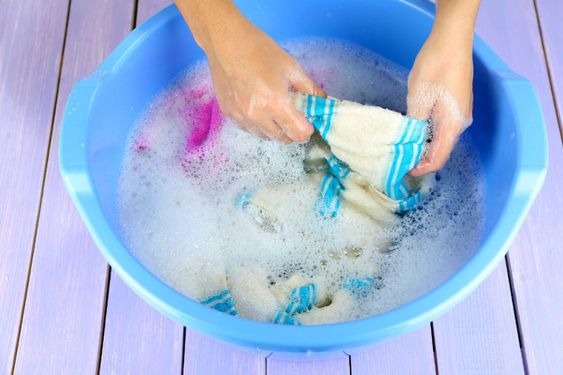
Step 8: Rinse in Cool Water
Rinsing in cool water is an important part of the process. It helps remove any lingering dirt and detergent from fabric fibers, ensuring that none will remain and cause irritation on your skin or potential damage to the clothing.
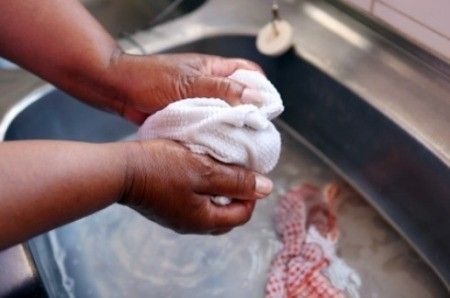
Step 9: Wring and Dry
To wring your clothes by hand, you’ll want to cradle an item in both hands and firmly squeeze them together, rotating the fabric as you go for maximum efficiency. Don’t be lightweight with this process – the idea is to extract as much water from the item as possible.
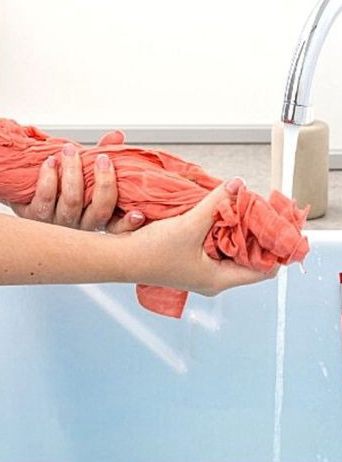
To dry, simply spread them out on a flat surface (or hang if you’ve got somewhere to do that) so they can breathe and be kissed by the sun.
How to Wash Clothes With a Washboard
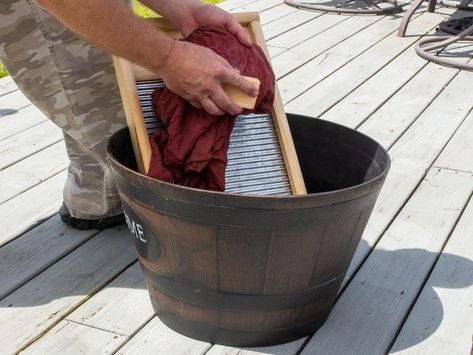
When it comes to washing clothes, you don’t always need the very latest in laundry technology. In fact, prior to electric washers and dryers, people were doing a perfectly fine job of keeping their clothing clean with a washboard.
Step 1: Pre-Treat Any Stains
Before you start scrubbing away like Cinderella, smarten up and pre-treat any stains first.
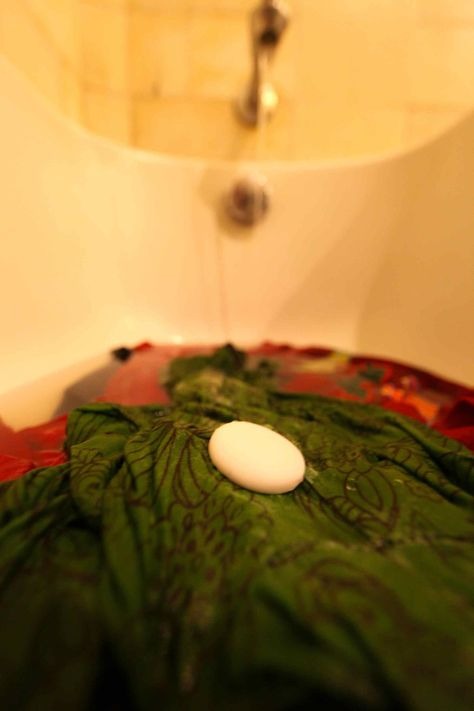
Do this by either spraying a specialized stain remover on them, sprinkling a generous amount of baking soda to lift the offending splotches away, or whatever household items you happen to have lying around.
This step is important, as it gets rid of the unwanted marks before they are embedded into the fabric for good.
Step 2: Fill the Basin With Water and Laundry Detergent
Fill the washbasin or your chosen container with water and laundry detergent. It is important to remember that more is not necessarily better when it comes to the amount of detergent; too much can leave residue on your clothing so it is best to start small and add if needed.

Step 3: Soak the Clothes
Put your clothing into the basin with water and detergent and let it soak for 20-30 minutes. If you’re dealing with particularly stubborn stains, you can let them sit for up to an hour before scrubbing them with the ridged surface of the washboard.
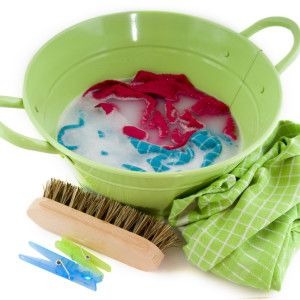
Step 4: Scrub the Clothes Using Your Washboard
Using your washboard – ideally made of beechwood (smooth and durable) set to work by rubbing the fabric back and forth between the ridges on both sides of the board. This produces friction that helps dislodge dirt from clothing fibers. Move quickly and in circular motions for best results.
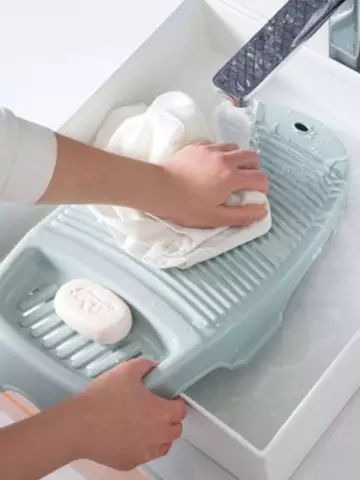
Step 5: Rinse and Dry
After the backbreaking labor of washing clothes with a washboard, the only thing left to do is rinse them, preferably in cool water. Once you’re all done, lay them out to dry and you can enjoy your freshly cleaned clothes.
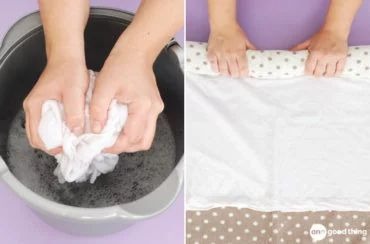
How to Wash Clothes Using a Bucket and a Plunger
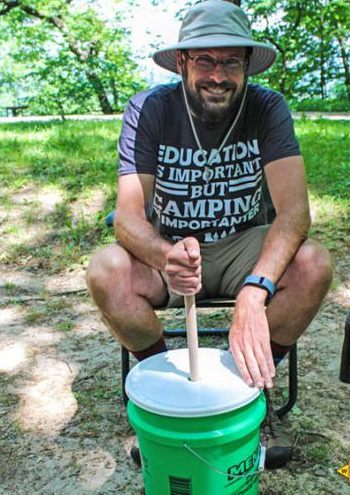
Washing clothes with a combination of a bucket and a plunger may seem like an old-fashioned, rural chore. However, the results are undeniable. The vigorous swishing motion created by using the plungers dislodges dirt and grime from clothes effectively without causing any damage to fibers or fasteners.
Step 1: Find a Clean Bucket and a Plunger
Make sure that you have a 5-gallon bucket in good condition for the task since anything smaller would be too small to get a good clean. Also, it’s important none of these items were used beforehand for something else, or you might end up with more muck than before!
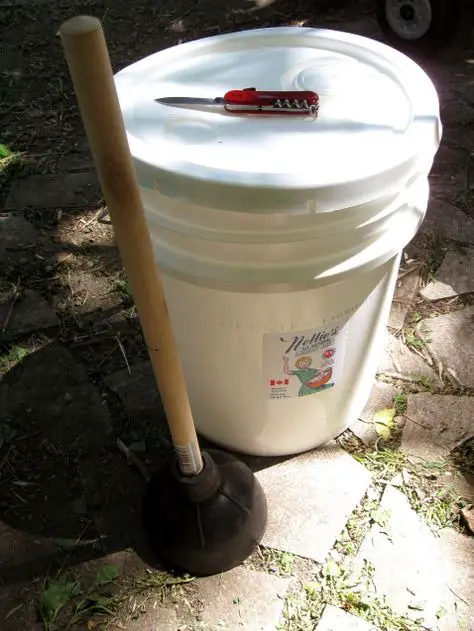
Step 2: Pre-Treat Any Stains
It’s best to start by pre-treating any stains so they don’t become permanent fixtures on your garments. Try creating a solution at home using hydrogen peroxide and dish soap for lightly stained fabrics, or invest in a commercial stain remover for tougher tasks!
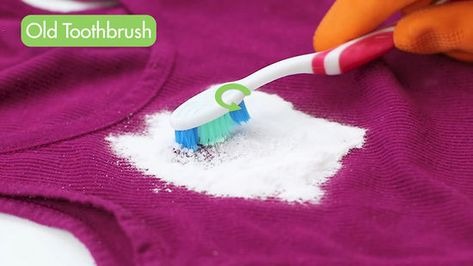
Step 3: Fill Your Bucket With Water and Detergent
Fill your bucket with the right amount of water and detergent and make sure that you don’t overdo it. Keep the level of clothes to about ½ to 2/3 of the bucket and leave room for some good ol’ sloshing.
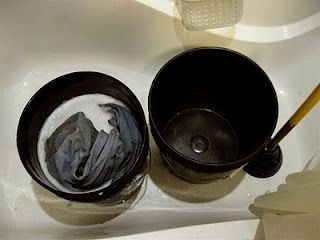
Bonus tip: using too much detergent won’t help to get any cleaner results – in fact, it can leave a residue on your laundry!
Step 4: Soak the Clothes
The clothes now need to be submerged in the soapy solution. They should be fully immersed in the water, but not overcrowded – about an inch or two of water should be enough to give them a nice bath. Leave them to soak for about 20 to 30 minutes, depending on how dirty they are.
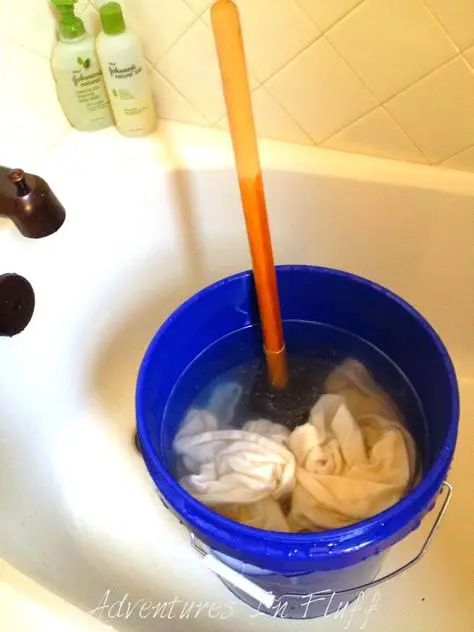
Step 5: Start Plunging
The main rule of thumb is to plunge in a steady up-and-down motion until you can tell the suds are washed out. Don’t be afraid to work those arms.
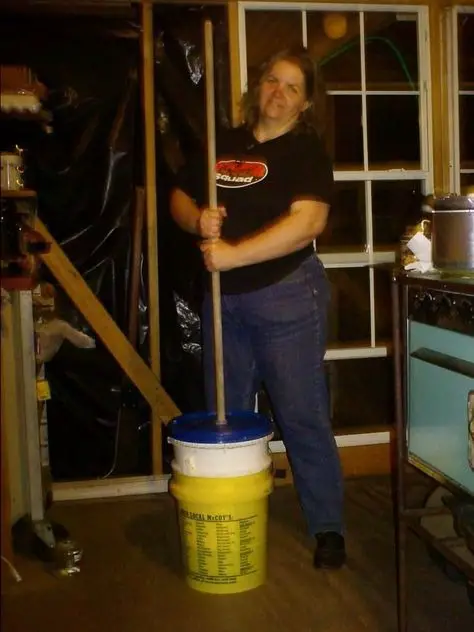
As you move the plunger up and down, this will help remove dirt from clothing while also properly agitating them in the soapy water. To make sure that everything comes out squeaky clean, just remember to plunge away for at least 5 minutes.
Step 6: Rinse and Dry
Once that’s finished make sure to give your clothes a thorough rinse by repeatedly dunking each piece of clothing in some clean, cold water. Squeeze each piece individually to remove any excess liquid.
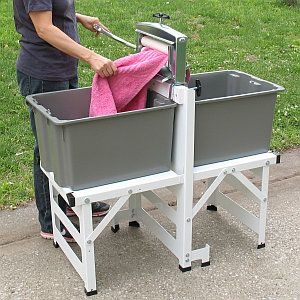
Even more importantly, take time to dry the clothes right away – especially if you live in a humid climate. Leaving wet garments slumped against each other in the bucket can encourage bacteria buildup, which is never pleasant.
Final Thoughts
Washing clothes without a washer may take more effort, but can be a rewarding experience. Handwashing, using a washboard on your washing line, or utilizing a bucket and plunger can all be really effective ways to clean your clothing and other fabric items.
Even if only tackled as an occasional chore, you’ll likely want to keep incorporating it into your laundry routine after trying one of these methods. So go ahead – give it a go and soon it won’t seem like so much of an effort any more!
FAQ
Can I wash my clothes in the bathtub?
Yes, you can hand wash your clothes in the bathtub. Although it may take a little longer than if you were to do it in a purpose-built washing tub, this alternative solution can be just as effective. The bathtub is also more practical than using a sink since it can give you plenty of lukewarm water to help reduce wrinkling.
Is hand washing clothes sanitary?
Hand washing can actually be more sanitary than machine washing in many cases, provided that certain standards of cleanliness and hygiene are met. In addition to being proven effective at killing bacteria, many individuals find hand washing to be a much gentler method of dealing with delicate fabrics.
What are the disadvantages of hand washing clothes?
Hand washing clothes means more water is used as opposed to machine-washing them – this increases the bills as well as your ecological footprint. Furthermore, it’s hard to get clothes as incredibly clean by hand washing as most people would want! Not to mention the fact that it often fatigues arms and can cause skin irritation with long term use.
binance-
Friday 1st of March 2024
Your article helped me a lot, is there any more related content? Thanks! https://www.binance.com/ka-GE/join?ref=FIHEGIZ8
Binance referal code
Thursday 29th of February 2024
Thanks for sharing. I read many of your blog posts, cool, your blog is very good. https://www.binance.info/ph/join?ref=UM6SMJM3
binance odkaz
Saturday 30th of December 2023
Can you be more specific about the content of your article? After reading it, I still have some doubts. Hope you can help me. https://accounts.binance.com/sk/register-person?ref=W0BCQMF1
nimabi
Tuesday 5th of December 2023
Thank you very much for sharing, I learned a lot from your article. Very cool. Thanks. nimabi
nimabi
Wednesday 29th of November 2023
Thank you very much for sharing, I learned a lot from your article. Very cool. Thanks. nimabi